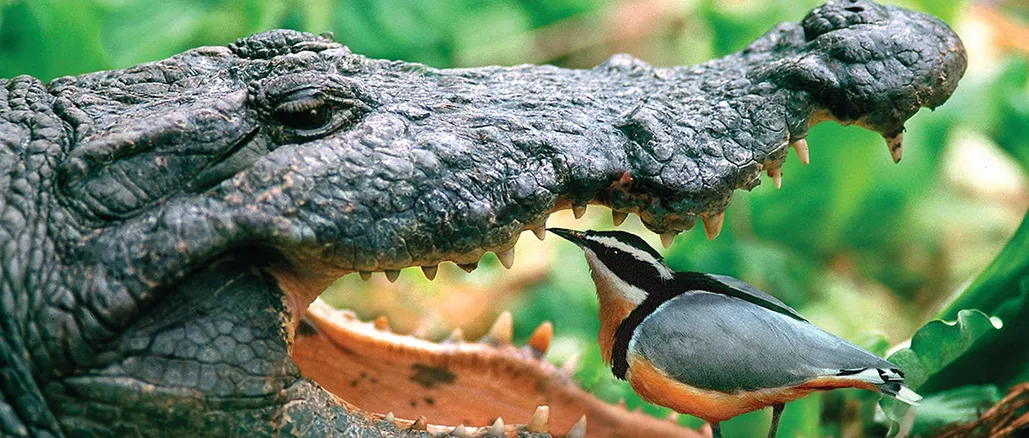The Symbiotic Relationships Amongst Animals
Symbiotic relationships are integral to the balance and function of ecosystems. These interactions between species can be mutually beneficial, commensal, or parasitic.
Understanding the dynamics of symbiosis helps us appreciate the complexity and interconnectedness of natural environments.
This article explores the fascinating world of animal symbiosis, highlighting key examples, types, and the significance of these relationships in maintaining ecological balance.

Types of Symbiotic Relationships
Symbiotic relationships are categorized into three primary types based on the nature of the interaction between the involved species: mutualism, commensalism, and parasitism.
Mutualism
In mutualistic relationships, both species benefit from the interaction. This type of symbiosis enhances the survival, growth, or reproductive success of both partners. Mutualism is common in nature and can be observed in various forms, from nutrient exchange to protection and transportation.
Commensalism
Commensal relationships involve one species benefiting while the other remains unaffected. The benefitting species often gains shelter, transportation, or food without impacting the host organism.
Parasitism
In parasitic relationships, one organism (the parasite) benefits at the expense of the other (the host). Parasites typically derive nutrients or protection from their hosts, often harming them in the process.
Examples of Mutualistic Relationships
Mutualistic relationships are vital for the survival and success of many species. Here are some notable examples that showcase the diversity and importance of mutualism in the animal kingdom.
Cleaner Fish and Larger Fish
In marine ecosystems, cleaner fish such as wrasses provide a cleaning service to larger fish by removing parasites and dead skin. The cleaner fish gain food, while the larger fish benefit from reduced parasite loads and better health. This interaction is crucial for maintaining the health of coral reef communities.
Bees and Flowers
Bees and flowering plants engage in a classic mutualistic relationship. Bees collect nectar and pollen for food from flowers, and in the process, they pollinate the plants, facilitating their reproduction. This mutualism is essential for the biodiversity and productivity of ecosystems.
Clownfish and Sea Anemones
Clownfish live among the venomous tentacles of sea anemones, gaining protection from predators. In return, clownfish defend the anemones from predators and parasites and provide them with nutrients through their waste. This relationship benefits both species and enhances their survival chances.
Examples of Commensal Relationships
Commensal relationships demonstrate how one species can benefit without affecting the other. Here are some intriguing examples of commensalism in the animal world.
Remoras and Sharks
Remoras, or suckerfish, attach themselves to sharks and other large marine animals using a specialized suction disk. They gain transportation and feed on leftover food scraps from the host. The shark remains unaffected by the presence of the remoras.
Barnacles and Whales
Barnacles attach themselves to the skin of whales, gaining a stable surface to live on and access to nutrient-rich waters as the whale moves. The whale does not receive any apparent benefit or harm from the barnacles.
Cattle Egrets and Livestock
Cattle egrets are often seen foraging near livestock such as cattle and horses. The egrets feed on insects stirred up by the movements of the grazing animals, benefiting from increased food availability. The livestock are neither helped nor harmed by the presence of the egrets.
Examples of Parasitic Relationships
Parasitic relationships highlight the more exploitative side of symbiosis, where one species benefits at the expense of another. Here are some well-known examples of parasitism.
Ticks and Mammals
Ticks are ectoparasites that attach themselves to mammals, birds, and reptiles, feeding on their blood. This can lead to blood loss, irritation, and transmission of diseases such as Lyme disease in the host. Ticks benefit by obtaining nutrients necessary for their survival and reproduction.
Tapeworms and Vertebrates
Tapeworms are endoparasites that inhabit the intestines of vertebrates, including humans. They absorb nutrients from the host's digested food, often leading to malnutrition and health issues for the host. The tapeworm benefits by securing a nutrient-rich environment for growth and reproduction.
Botflies and Mammals
Botflies lay their eggs on mammals, including humans. When the larvae hatch, they burrow into the host's skin, causing painful sores and potential infections. The larvae feed on the host's tissue until they mature and emerge. The botfly benefits by using the host as a food source and a protective environment for development.
The Ecological Significance of Symbiotic Relationships
Symbiotic relationships play a crucial role in maintaining the balance and health of ecosystems. These interactions can influence population dynamics, nutrient cycles, and community structure. Here are some key ecological benefits of symbiotic relationships:
Biodiversity Maintenance
Mutualistic relationships, such as pollination and seed dispersal, contribute to plant diversity and productivity, which in turn supports a wide range of animal species. This diversity enhances ecosystem resilience and stability.
Nutrient Cycling
Symbiotic interactions often involve nutrient exchange and recycling. For example, decomposer organisms like fungi and bacteria form mutualistic relationships with plants, breaking down organic matter and making nutrients available to the ecosystem.
Population Control
Parasitic relationships can regulate host populations, preventing any single species from becoming overly dominant. This control helps maintain species diversity and balance within ecosystems.
Habitat Formation
Certain symbiotic relationships contribute to the creation and maintenance of habitats. Coral reefs, formed by mutualistic relationships between corals and algae, provide shelter and food for a multitude of marine species.
Conclusion
Symbiotic relationships among animals are complex and varied, encompassing mutualism, commensalism, and parasitism. These interactions are fundamental to the functioning and stability of ecosystems, influencing biodiversity, nutrient cycles, and population dynamics. By understanding and appreciating these relationships, we gain deeper insights into the interconnectedness of life and the importance of preserving natural habitats.
Sources
- ScienceDirect: Pollination Biology and Mutualism
- BBC Earth: Symbiosis in Nature
- National Geographic: Barnacles
- BioOne Complete: Cattle Egrets
- Centers for Disease Control and Prevention: Ticks
- Journal of Parasitology: Botfly Life Cycle














![[LIVE] Engage2Earn: Veterans Affairs Labor repairs](https://cdn.bulbapp.io/frontend/images/1cbacfad-83d7-45aa-8b66-bde121dd44af/1)














